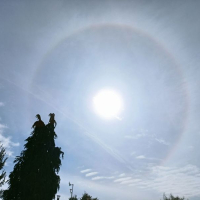jks
About
- Username
- jks
- Joined
- Visits
- 36,720
- Last Active
- Roles
- Member, Administrator, Moderator
- Points
- 670
Reactions
-
Direct access to S Meter and Spectrum data
Well.. There needs to be a more detailed discussion here as there may be some misconceptions about what the KiwiSDR is and what its capabilities are.
The timing repeatability of the measurement you want are a little difficult to achieve given the "best effort" nature of some of the Kiwi functions. This is due to the Kiwi design. Remember that the Kiwi goal is to provide a total solution in a single box, including what is usually the "PC" side of most SDRs that consist of an SDR "IQ-generator" device plus PC with SDR software running on it. And the PC has vastly superior processing power to the Kiwi's single board computer (BeagleBone Green). BUT at the dollar cost of the PC (which most people incorrectly discount) and the often terrible burden of software installation problems (you see this even now in the support forums of the IQ-generator products -- very sad).
So with its design the Kiwi has to give highest priority to processing the audio and guarantee no audio drops (except when the network connection is poor -- something the Kiwi cannot control). Everything else has lower priority, especially waterfall processing. And there are lots of other things going on simultaneously: GPS, user interface, possibly processing to support an open extension etc.
Consider the case of the wsprdaemon group (https://groups.io/g/wsprdaemon/topics). For a long time they asked for custom modification to the Kiwi. And I provided them, best I could. And they bought a number of Kiwi. Fair enough. But in the end their ever-growing requirements forced them to switch to a more traditional IQ-based SDR with a standard PC for the increased processing power.
Some technical points we should discuss. The audio and waterfall output each use two completely independent, tunable, digital downconverters (DDCs). The S-meter values are derived from the audio channel and influenced by the passband. It is not derived from passband-limited waterfall bins. Not many people understand or use this feature but it is entirely possible to tune the waterfall far away from where the audio channel is listening. The audio could be listening to 7020 cw and enter "#28200" in the frequency field to check for 10m beacon activity -- without disturbing the 80m audio (enter "#" to re-align the waterfall to the audio).
Now to your questions:
1. The S-Meter records the sum of the discrete RF spectrum values over the passband.
No. See above. It's just a
2. The passband width depends on the chosen modulation mode, e.g., CW vs CWN vs AMW, etc.
No, the passband is not fixed based on mode. The initial passband values are set based on mode. But you can change them to be whatever you want afterwards. And those new values will persist when you return to that mode (I'm talking about the Kiwi user interface here).
3. The time between the plotted points in the S-Meter display varies. (I manually counted a range of about 42 per second to 47 per second.)
Are you talking about the S-meter extension? (graph at the top of the display when active). You must be. Did you really count display pixels between the vertical marker lines to determine this?
4. Why is the time between plotted points allowed to vary?
I can't remember. That extension was written many years ago. Probably because there was no buffering of the S-meter values. Remember that the S-meter extension runs on a best-effort basis. And also involves a Javascript component that runs in the browser. So yet another source of timing uncertainty. The actual S-meter values are prepended to each audio packet sent from the Kiwi. So occur at a regular rate. But there can be many reasons why they are not processed at a regular rate.
5. The waterfall plot is a more direct way to plot the RF spectrum.
Yes.
6. The bandwidth of the spectral waterfall plot is governed by the chosen size (i.e., the zoom level) of the display window.
Yes. 30 MHz divided by power of two: 15, 7.5 MHz etc. The user control panel "stat" tab shows the spectrum span value.
7. What is the time between successive “lines” of the waterfall plot?
This varies considerably due to the low priority of the waterfall task. And also the "acquisition time" determined on the zoom factor. And there is a "WF Rate" control on the WF tab that sets relative update time as well. Just like a real spectrum analyzer, high zoom factors take considerable time for the DDC to accumulate all the necessary samples. At z0 it happens in a flash. At z14 it takes forever.
8. Is this timing constant?
No. See above.
9. It is possible to use the CURL command to manually sample the S-Meter and spectrum by specifying a time in the former case and a time and a frequency in the latter case.
Yes for the S-meter, no for the waterfall (but it would be relatively easy to add and is maybe the easiest solution to your measurement problem). The various URL-based queries that can also be used via curl are listed here: http://kiwisdr.com/info/#id-urls
10. What would induce you to make it possible to directly access the time series of S-Meter and Waterfall Plot values as, say, CSV files, rather than struggling with recorder and Python?
See #9 answer. I'm more likely to add another query URL to return a sample of waterfall data. Most of the code to do so has already been written for the SNR measurement function since it is based on averaged waterfall bin data.
I'm in the middle of working on new products and upgrades and don't have much time for anything else. I'm having trouble keeping up with my emails as it is..
-
v1.819
From the CHANGE_LOG file:
v1.819 August 10, 2025
Admin network tab: Added lower Ethernet MTU values needed to make a certain UK 4G mobile
network function. (thanks G8GPO)
With Mongoose 7.14 support older non ws format web socket URLs so 3rd party applications
continue to work, e.g. KiwiKonnect. (thanks Chris, Black Cat Systems)
Fixed Javascript syntax error in waterfall extension. (thanks Pierre)
-
v1.818
From the CHANGE_LOG file:
v1.818 August 9, 2025
Fixed problem where connections incorrectly originate from the local 127.0.0.1 loopback address.
When the local proxy service client (frpc) running on the Kiwi forwards packets to the
Kiwi server they will always have the IP source address 127.0.0.1. This occurs because frpc
and the server are running on the same computer. To not lose the actual IP address of the
person connecting frpc puts that IP in a special HTTP header. Well, for some reason, the
version of the Mongoose web server we use occasionally drops those special headers.
The root cause could not be found. But some time ago we ported a much more recent version
of Mongoose to the Kiwi and it doesn't have this problem. So the fix is to simply start
using this newer version.
Also, code was added to specifically reject forwarded connections with the special header
containing a local or loopback addresses. This might possibly affect private proxy setups,
like those using Tailscale or Nginx etc, if they incorrectly use a local or loopback in the
HTTP header. You can disable this specific change (but not the Mongoose upgrade) by going to
the admin "update" tab, bottom of the page, and setting "Disable recent changes?" to "Yes".
The SNR strong, wide-band signal filter has been withdrawn.
-
v1.817
From the CHANGE_LOG file:
v1.816,817 August 7, 2025
Better indication of when a channel is initially occupied. (thanks AC8FL)
The list of connections displayed on the control panel "User" tab and admin "Status" tab
is updated every 3 seconds. But a "bot" connection that isn't following the Kiwi API rules
takes about 10 seconds to be correctly identified and kicked. This has the side-effect of
making a channel look available when in fact it is occupied for those 10 seconds
(because the connection list entry is still blank). If this happens to the last channel
available you might incorrectly get the impression the channel isn't being “released"
because it looks unoccupied, but you can't connect to it (all channels are seen as full).
To make this situation more clear a user name of "(connecting)" will be shown immediately
when a channel is first allocated and updated when the connection is fully established.
This will also make it somewhat easier to spot when there are lots of bot connection
attempts rather than having to spot them by reviewing the log.
Admin webpage tab:
New button "Display all fonts in bold" which some of us need, lol. (thanks Jerry and KFS)
Does not apply to the admin page currently. This change required minor adjustments to
the user interface nearly everywhere to account for the larger size of the bold fonts.
If you see a spot where things look wrong please let us know.
-
Unexplained Restarts [auto overnight blacklist updates]
Almost certainly because I've been updating the IP address blacklist and you have automatic blacklist downloads turned on.
On the admin status tab is a list of all possible reasons for a nightly restart. The last item in that list "Network tab: Automatically download IP blacklist" is probably set green in your case (this is the default). I can't remember if there's a specific log message when this occurs or not.








